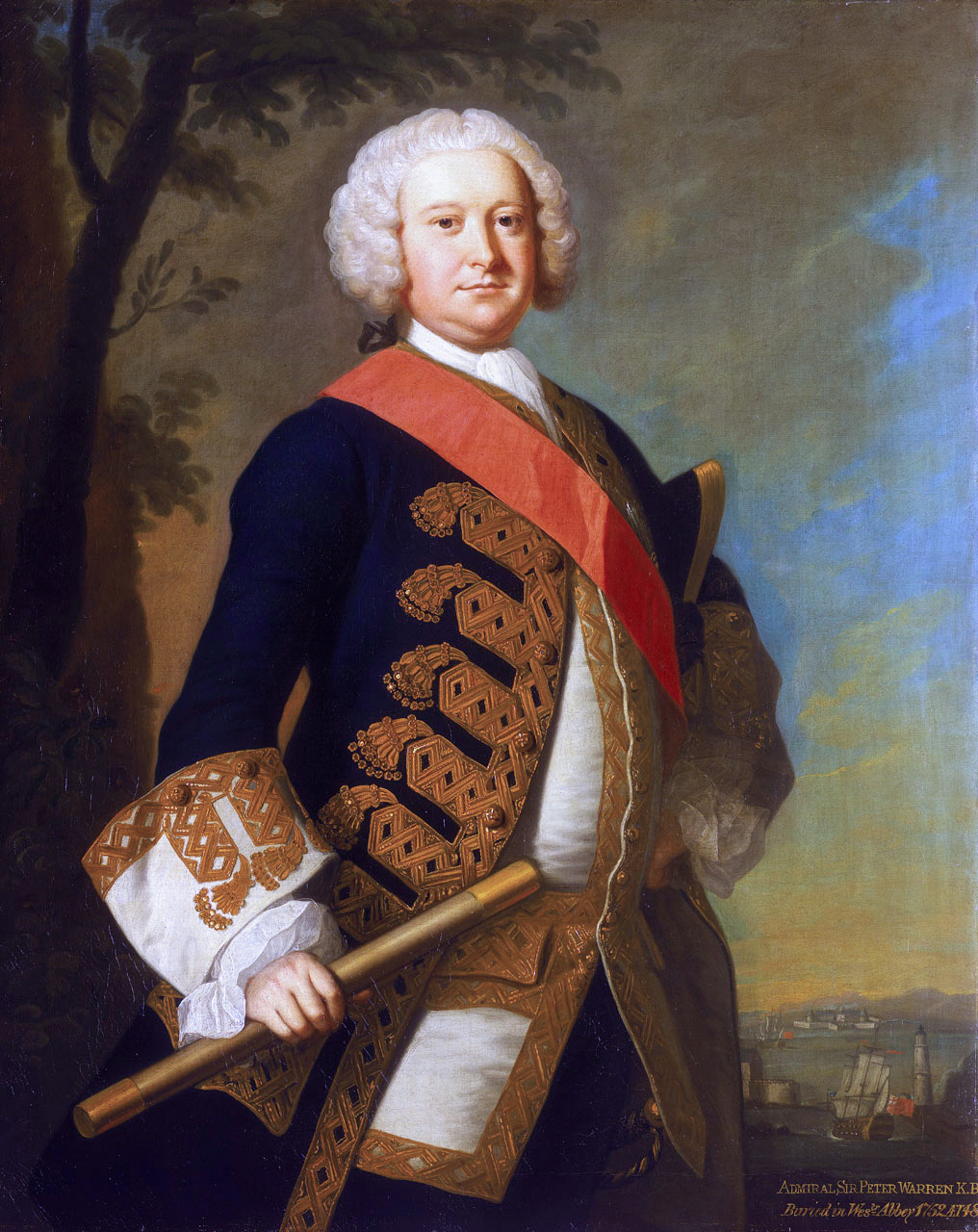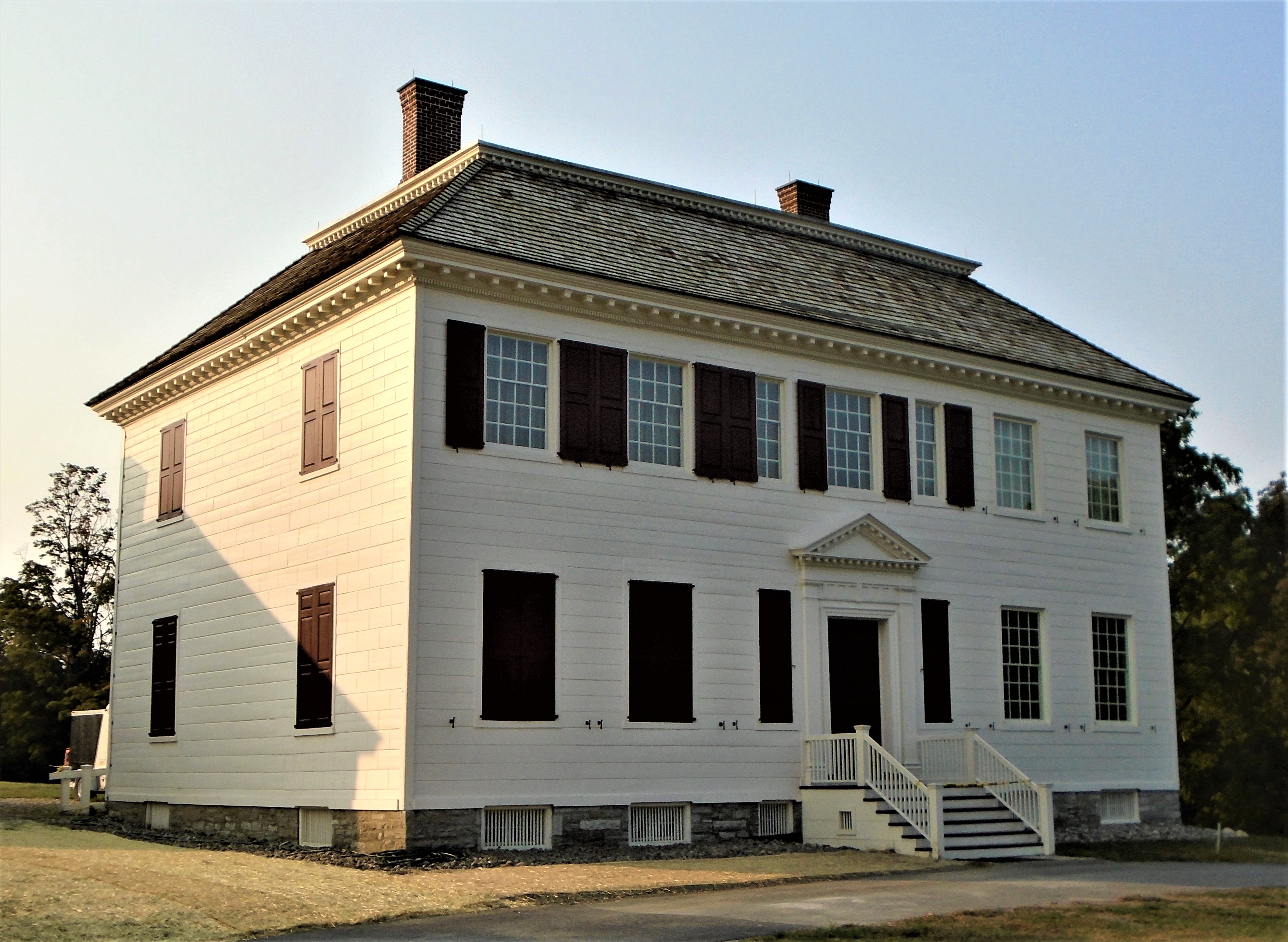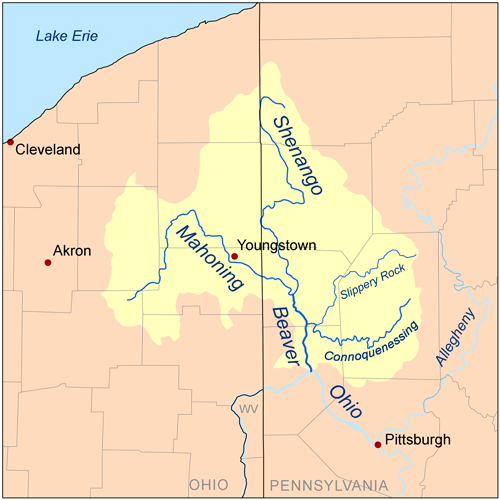|
Custaloga
Custaloga, also known as Packanke, was a chief of the Delaware (Lenape) tribe in the mid-18th century. He was a member of the Wolf Clan through his mother. Captain Pipe was his nephew and succeeded him as chief. Life Little is known of the early life of Custaloga. He was born as Packanke into the Wolf Clan of his mother. The Delaware had a matrilineal kinship system, in which descent and hereditary leadership were passed through the mother's line. Children were born into the mother's clan and gained their social status there. ''Custaloga,'' as he was documented by Indian agent George Croghan and other British colonists, settled in western Pennsylvania in the mid-18th century and built a sizeable village with his band at the confluence of French Creek and North Deer Creek in Mercer County, Pennsylvania. This town, known as "Custaloga's Town," became his principal seat. He also started another village known as ''Cussewago,'' along French Creek, at the present site of Meadville in ... [...More Info...] [...Related Items...] OR: [Wikipedia] [Google] [Baidu] |
Captain Pipe
Captain Pipe (c. 1725? – c. 1818?) ( Lenape), called Konieschquanoheel and also known as Hopocan in Lenape, was an 18th-century Head Peace chief of the Algonquian-speaking Lenape (Delaware) and War Chief 1778+. He succeeded his maternal uncle Custaloga as chief by 1773.Stephen T. JacksonIn History: The tale of Captain Pipe ''Herald Bulletin'', 4 September 2010, accessed 27 August 2021 Likely born in present-day Pennsylvania, he later migrated with his people into eastern Ohio. Although Hopocan tried to stay neutral during the American Revolutionary War, after many of his family and people were killed in colonial American raids, he allied with the British. After the war, he moved his people fully into Ohio Country. He made treaties with the Continental Congress to try to protect Lenape land. American settlers continued to encroach on his people and territory. In 1812 he moved with his people westward into present-day Indiana, where some accounts say he died. By 1821, mo ... [...More Info...] [...Related Items...] OR: [Wikipedia] [Google] [Baidu] |
Guyasuta
Guyasuta (c. 1725–c. 1794; see, Kayahsotaˀ, either "he stands up to the cross" or "he sets up the cross") was an important Native American leader of the Seneca people in the second half of the eighteenth century, playing a central role in the diplomacy and warfare of that era. At young age, he and his family migrated along the Allegheny River and finally settled in Logstown, an Iroquois village in Pennsylvania. The paternal half of his ancestry were decorated warriors. Biography Guyasuta made acquaintance with young George Washington (whom he called "Tall Hunter") in 1753 when he accompanied and guided him through Pennsylvania to the French Fort Le Boeuf, and is referred to as "The Hunter" in Washington's personal journals. Despite the expedition, Guyasuta played a role in defeating the Braddock Expedition in 1755, and allied with the French in the French and Indian War. Guyasuta was a major player in Pontiac's Rebellion—indeed, some historians once referred to ... [...More Info...] [...Related Items...] OR: [Wikipedia] [Google] [Baidu] |
Meadville, PA
Meadville is a city in and the county seat of Crawford County, Pennsylvania. The city is within of Erie and within of Pittsburgh. It was the first permanent settlement in Northwestern Pennsylvania. The population was 13,388 at the 2010 census. The city of Meadville is the principal city of the Meadville, PA Micropolitan Statistical Area. As well as one of two cities, the other being Erie, that make up the larger Erie-Meadville, PA Combined Statistical Area. History Meadville was settled on May 12, 1788, by a party of settlers led by David Mead. Its location was chosen well, for it lies at the confluence of Cussewago Creek and French Creek, and was only a day's travel by boat to the safety of Fort Franklin. Their settlement was in a large meadow, first cleared by Native Americans led by Chief Custaloga, and well suited for growing maize. The village Custaloga built here was known as Cussewago. Custaloga's name first appeared in western Pennsylvania's history in Georg ... [...More Info...] [...Related Items...] OR: [Wikipedia] [Google] [Baidu] |
Kuskusky
"at the falls, by the falls or rapids" unm, kwësh-kwëshelxus-kee "hogs" + -kee (suffix used in place names) "Hogs Town" , settlement_type = Historic Native American village , image_skyline = , imagesize = , image_alt = , image_map1 = Pennsylvania in United States (US48).svg , mapsize1 = , map_alt1 = , map_caption1 = Location of Pennsylvania in the United States , image_caption = , nickname = , coordinates = , established_title = Founded , established_date = 1720 , established_title2 = Abandoned , established_date2 = 8 February, 1778 , established_title3 = , established_date3 = , population_total = , population_est = 300-400 , pop_est_as_of = 1758 , subdivision_type = State , subdivision_name = Pennsylvania , subdivision_type1 = Present-day Commun ... [...More Info...] [...Related Items...] OR: [Wikipedia] [Google] [Baidu] |
Lenape Chiefs - Wolf Clan
The following were chiefs of the Wolf Clan of the Lenape (Delaware) tribe: * Custaloga (to 1774) * Captain Pipe (from 1774 to 1794?) * Hockingpomska (from 1794? to unk.) * Captain Pipe (younger) (from unk.-c. 1840) and Silas Armstrong (from c. 1800–1817) {{Incomplete list, date=August 2008 See also *Lists of Native American people A ''list'' is any set of items in a row. List or lists may also refer to: People * List (surname) Organizations * List College, an undergraduate division of the Jewish Theological Seminary of America * SC Germania List, German rugby union ... ... [...More Info...] [...Related Items...] OR: [Wikipedia] [Google] [Baidu] |
Tribal Chief
A tribal chief or chieftain is the leader of a tribal society or chiefdom. Tribe The concept of tribe is a broadly applied concept, based on tribal concepts of societies of western Afroeurasia. Tribal societies are sometimes categorized as an intermediate stage between the band society of the Paleolithic stage and civilization with centralized, super-regional government based in cities. Anthropologist Elman Service distinguishes two stages of tribal societies: simple societies organized by limited instances of social rank and prestige, and more stratified societies led by chieftains or tribal kings (chiefdoms). Stratified tribal societies led by tribal kings are thought to have flourished from the Neolithic stage into the Iron Age, albeit in competition with urban civilisations and empires beginning in the Bronze Age. In the case of tribal societies of indigenous peoples existing within larger colonial and post-colonial states, tribal chiefs may represent their tribe or ... [...More Info...] [...Related Items...] OR: [Wikipedia] [Google] [Baidu] |
Iroquois Confederacy
The Iroquois ( or ), officially the Haudenosaunee ( meaning "people of the longhouse"), are an Iroquoian-speaking confederacy of First Nations peoples in northeast North America/ Turtle Island. They were known during the colonial years to the French as the Iroquois League, and later as the Iroquois Confederacy. The English called them the Five Nations, comprising the Mohawk, Oneida, Onondaga, Cayuga, and Seneca (listed geographically from east to west). After 1722, the Iroquoian-speaking Tuscarora people from the southeast were accepted into the confederacy, which became known as the Six Nations. The Confederacy came about as a result of the Great Law of Peace, said to have been composed by Deganawidah the Great Peacemaker, Hiawatha, and Jigonsaseh the Mother of Nations. For nearly 200 years, the Six Nations/Haudenosaunee Confederacy were a powerful factor in North American colonial policy, with some scholars arguing for the concept of the Middle Ground, in that Europe ... [...More Info...] [...Related Items...] OR: [Wikipedia] [Google] [Baidu] |
Fort Pitt (Pennsylvania)
Fort Pitt was a fort built by British forces between 1759 and 1761 during the French and Indian War at the confluence of the Monongahela and Allegheny rivers, where the Ohio River is formed in western Pennsylvania (modern day Pittsburgh). It was near (but not directly on) the site of Fort Duquesne, a French colonial fort built in 1754 as tensions increased between Great Britain and France in both Europe and North America. The French destroyed Fort Duquesne in 1758 when they retreated under British attack. British colonial protection of this area ultimately led to the development of Pittsburgh and Allegheny County, Pennsylvania by British-American colonists and immigrants. Location and construction In April 1754, the French began building Fort Duquesne on the site of the small British Fort Prince George at the beginning of the French and Indian War (AKA Seven Years' War). The Braddock expedition, a 1755 British attempt to take Fort Duquesne, met with defeat at the Battle of ... [...More Info...] [...Related Items...] OR: [Wikipedia] [Google] [Baidu] |
Sir William Johnson
Sir William Johnson, 1st Baronet of New York ( – 11 July 1774), was a British Army officer and colonial administrator from Ireland. As a young man, Johnson moved to the Province of New York to manage an estate purchased by his uncle, Royal Navy officer Peter Warren, which was located in territory of the Mohawk, one of the Six Nations of the Iroquois League, or ''Haudenosaunee''. Johnson learned the Mohawk language and Iroquois customs, and was appointed the British agent to the Iroquois. Because of his success, he was appointed in 1756 as British Superintendent of Indian Affairs for all the northern colonies. Throughout his career as a British official among the Iroquois, Johnson combined personal business with official diplomacy, acquiring tens of thousands of acres of Native land and becoming very wealthy. Johnson commanded Iroquois and colonial militia forces against the French and their allies during the French and Indian War, the North American theater of the Seven Year ... [...More Info...] [...Related Items...] OR: [Wikipedia] [Google] [Baidu] |
Johnson Hall
Johnson Hall State Historic Site was the home of Sir William Johnson (1715–1774) an Irish pioneer who became the influential British Superintendent of Indian Affairs in the Province of New York, known for his strong relationship especially with the Mohawk and other Iroquois League nations. Johnson Hall is located at Hall Avenue, West State Street and Johnson Avenue, in Johnstown, New York. History The house was built seven miles from the Mohawk River, close to Hall Creek. Hall Creek provided water sufficient to power a sawmill and later a grist mill. Built of wood, the house frame was covered with wood planks intended to simulate stone. Johnson engaged leading colonial architect Peter Harrison (1716-1775) to design the house; he hired the carpenter, Samuel Fuller, to build it. At least some of the ideas for the house came from the ''Builders' Companion'' magazine. Johnson also had two stone block houses built as defenses against attack on the frontier, as the British had j ... [...More Info...] [...Related Items...] OR: [Wikipedia] [Google] [Baidu] |
Shenango River
The Shenango River is a principal tributary of the Beaver River, approximately 100 mi (160 km) long,Columbia Gazetteer of North America entry for Shenango River in in the . It also briefly flows through small portions of northeastern . |
Albany, New York
Albany ( ) is the capital of the U.S. state of New York, also the seat and largest city of Albany County. Albany is on the west bank of the Hudson River, about south of its confluence with the Mohawk River, and about north of New York City. The city is known for its architecture, commerce, culture, institutions of higher education, and rich history. It is the economic and cultural core of the Capital District of the State of New York, which comprises the Albany–Schenectady–Troy Metropolitan Statistical Area, including the nearby cities and suburbs of Troy, Schenectady, and Saratoga Springs. With an estimated population of 1.1 million in 2013, the Capital District is the third most populous metropolitan region in the state. As of 2020, Albany's population was 99,224. The Hudson River area was originally inhabited by Algonquian-speaking Mohican (Mahican), who called it ''Pempotowwuthut-Muhhcanneuw''. The area was settled by Dutch colonists who, in 1614, built Fort ... [...More Info...] [...Related Items...] OR: [Wikipedia] [Google] [Baidu] |








